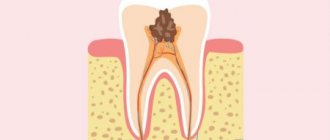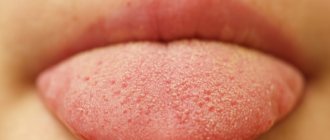What is acetone syndrome or acetone in a child?
The first thing to remember: acetone in a child is not a disease (not associated with a viral or bacterial infection), but a signal that the body has run out of glucose and there is an excess of ketone bodies in the blood. Ketones are a group of substances formed in the liver, products of incomplete oxidation of fats in the form of acetone and similar compounds.
How does acetone occur?
A child’s body is structured the same as an adult’s, but individual organs are not yet working at full capacity. Carbohydrates obtained from food are processed in the stomach and glucose enters the blood, most of which is used for energy, and some accumulates in the liver in the form of glycogen.
The supply of glucose (glycogen) in both adults and children is actively consumed with increased physical and mental stress, but in children it is much less, so it runs out faster. Fats are used, the breakdown of which also produces a small amount of energy, but at the same time ketones appear. If the child’s body does not receive glucose on time, fats will begin to break down too actively, and a large amount of ketones will be formed.
Quickly spreading through the blood throughout the body, they poison it. Acetone irritates the vomiting center and causes constant (acetonemic) vomiting, the smell of acetone appears on the breath and acetone in the urine, and there is a danger of dehydration.
What contributes to the appearance of acetone in a child’s urine and blood?
- The main reasons for acetone:
- unbalanced diet
- predominance of fats and proteins in the child’s food and lack of glucose; - overeating and starvation;
- enzymatic deficiency
- carbohydrates are poorly absorbed; - increased glucose consumption
- increased physical and mental stress, stress, injury, infectious diseases, especially accompanied by diarrhea and vomiting.
A childhood disease called "acetone"
August 18, 2017
In recent years, pediatricians have increasingly encountered complaints from mothers about the smell of acetone in children. Often the smell is accompanied by other symptoms – vomiting and fever. What to do in such cases and is this condition dangerous? Helping your child with the smell of acetone on their breath First, make your child sweet, warm tea. And to determine acetone, there are special test strips that are sold in a regular pharmacy. It is better to always have such a test system if you have a child at home.
You should read the instructions for the system and do testing. Depending on the results obtained, a set of measures is taken. Learn reliable information on acetone syndrome. This is what doctors call this condition.
Why does children smell of acetone on their breath?
Attention!
A smell reminiscent of acetone is not a disease or diabetes, as many people think. This is a sign that the baby's glycogen stores are depleted. Glycogen is necessary for energy production; its deficiency occurs when metabolism is disturbed and precisely when there is little glycogen in the baby’s body.
Features of a child’s body compared to adults:
- Glycogen, which is contained in the liver and muscle tissue, is much less - from 45 to 70 grams. An adult has about 650 grams.
- Metabolism in children is more intense.
- Blood glucose (sugar) levels fluctuate frequently.
- Pancreatic enzymes are less active.
Smell of acetone.
Reasons for appearance. Acetonemic syndrome and ketone bodies In some cases, the child has a high need for additional energy. For example, in case of overexcitation, overwork, after an illness, hunger, etc. The body takes energy from glucose in the blood, but this is enough for a short period of time (just a few minutes). To make up for the energy deficit, you have to use another source - glycogen (located in the liver and muscles). It lasts for several hours, but this is still not enough. Then fats are consumed. But in order to be converted into energy, fats (lipids) first need to go through certain stages with the formation of intermediate substances. Experts call these substances ketone bodies. When the amount of ketone bodies is small, the body is able to quickly utilize them, and when there are too many of them, they begin to be excreted through the kidneys, intestines and lungs. Hence the specific smell. When should you call an ambulance? You should immediately consult a doctor if:
- prolonged crying (no tears);
- dry tongue in a child;
- no urination for more than six hours;
- refusal to drink.
There is no need to try to stabilize the child’s condition on your own or use questionable methods!
Here you only need qualified help. For other, non-serious conditions, there are a number of simple measures that mom and dad should study. Why does a child vomit when using acetone? Mothers are most frightened by vomiting in children. The urge to vomit and loss of appetite appears due to an excess of ketone bodies, which: 1. Act directly on the vomiting center in the brain. 2. Suppress the hunger center. 3. They irritate the mucous membranes of the gastrointestinal tract as they pass through the intestines. Because of this, the child may not only have nausea and vomiting, but also have a stomach ache.
Conclusions. Acetone in children is not a pathology (that is, a disease), but a specific reaction of the body to a deficiency of glucose in the blood. Acetone appears when fats are broken down in the body with the formation of ketone bodies in quantities that are difficult for the body to remove. Parents must know how to help their child in such cases. If you find similar symptoms, it is still better to immediately make an appointment with a pediatrician. by phone
Diagnosis of acetone syndrome
The first signs appear at the age of two or three, by the age of seven or eight they can become more frequent, and at the age of 12-13 they usually stop.
If a child has acetone for the first time, it is necessary to contact a pediatrician, for example, a medical specialist. Acetone syndrome can only be determined by a doctor, since the smell of acetone in the urine may be a sign of insulin deficiency, and there is a risk of diabetes mellitus. In these cases, an urgent consultation with an endocrinologist, gastroenterologist and psychotherapist is required, which can be obtained here in the center.
- Acetone in children can be divided into two types:
- primary - the result of poor nutrition and a sign of an unhealthy lifestyle;
- secondary - consequences of infectious and endocrine diseases, damage to the central nervous system.
In addition, there is a primary idiopathic acetonomy syndrome, where the main provoking factor is a hereditary predisposition.
Discolored stool
Hepatitis
53147 August 25
IMPORTANT!
The information in this section cannot be used for self-diagnosis and self-treatment.
In case of pain or other exacerbation of the disease, diagnostic tests should be prescribed only by the attending physician. To make a diagnosis and properly prescribe treatment, you should contact your doctor. The color of stool depends on the amount of bile pigments (products of the breakdown of hemoglobin), coloring substances contained in food and medications, admixtures of fresh or clotted blood, and metabolic products of microorganisms living in the intestines.
In the absence of strongly coloring food pigments, the color of stool is normally light to dark brown.
Stercobilin, a breakdown product of bilirubin, gives stool its brown color. A change in the color of stool from light green to yellowish-gray can occur with various diseases.
If bilirubin does not enter the gastrointestinal tract for any reason, the stool will become discolored. Such feces are called acholic. Discolored stool can have a different consistency, which is determined by the amount of water consumed, plant fiber, intestinal tone and other factors. These factors are taken into account when diagnosing liver diseases.
Possible reasons
Damage to the hepatic and bile ducts
.
If the patency of the hepatic ducts is impaired cholestasis
, which is characterized by acholic feces. Cholestasis can be caused by blockage of the ducts with small stones (cholelithiasis), blood clots, parasites (with opisthorchiasis, fascioliasis, clonorchiasis), and can also be a consequence of congenital anomalies, cicatricial stenosis, and the presence of tumors of the bile ducts. The lumen of the common bile duct may be narrowed due to tumor growth, due to inflammation and cysts of the pancreas, recurrent cholangitis, lymphadenitis due to tuberculosis, sarcoidosis, or be a consequence of surgical treatment and adhesions. In all cases, the flow of bile from the liver is impaired.
Symptoms of cholestasis are: skin itching, jaundice, discoloration of stool and dark urine; severe cases are manifested by a flu-like condition (chills and fever).
Sclerosing cholangitis
is a pathology that is also accompanied by discoloration of stool due to a violation of the outflow of bile. With this disease, sclerosis of the bile ducts occurs (replacement of healthy organ tissue with scar connective fibers) due to inflammatory processes.
Sclerosing cholangitis in most cases is accompanied by inflammatory diseases of the gastrointestinal tract (ulcerative colitis, Crohn's disease).
Patients develop jaundice of the skin, mucous membranes and sclera, itching, weakness and fatigue, weight loss, impaired motor activity due to limited mobility of the limbs (symptoms of osteoporosis).
Functional disorders of the biliary tract
. Functional dysmotility of the biliary tract - biliary dyskinesia - is one of the most common causes of changes in the color of stool. This is due to a narrowing (muscle spasm) of the lumen of the bile ducts and duodenal papilla, which regulates the flow of bile into the intestine.
Spasm can occur due to hormonal disorders, systemic diseases, pain, or after surgical interventions. In this case, the stool discoloration will not be permanent. The stool becomes light only after spastic attacks, and during the period of resumption of motility of the biliary tract, its color returns to normal.
Considering that the brown tint of stool is caused by bile pigments, any process of disruption of their synthesis or entry into the gastrointestinal tract is accompanied by a change in the color of the stool. Discolored feces do not always indicate illness: with excessive consumption of fatty foods
the usual amount of bile is not enough to process all the absorbed fats, and the feces become light in color.
In some infectious diseases
(cholera, salmonellosis, dysentery),
digestive disorders
(inadequate absorption of nutrients, irritable bowel syndrome), increased intestinal motility leads to the rapid movement of feces, which do not have time to change color.
If discolored feces persistently form, diseases of the hepatobiliary system (liver, gallbladder, hepatic and bile ducts, sphincter of Oddi) should be suspected.
Degenerative-inflammatory liver diseases (hepatitis of various etiologies, cirrhosis) affect the synthesis and metabolism of bile pigments and bilirubin, which is often manifested by uncolored feces.
Damage to liver cells (hepatocytes)
. Hepatocytes that produce bile can die under the influence of many factors.
The infectious nature of liver diseases should be considered first.
hepatitis
viruses enter the blood, an acute infectious disease develops, which is manifested by high fever, nausea, vomiting, heaviness and pain in the right hypochondrium, a yellow coloration of the sclera appears (icterus), urine darkens, and feces become discolored.
When infected with hepatitis B and C viruses,
the process often becomes chronic. The incubation period for hepatitis C can be up to six months, and in the acute period of the disease, symptoms resemble a respiratory infection. Chronic viral hepatitis B and C, if left untreated, can lead to cirrhosis and liver cancer. Hepatitis can be accompanied by cytomegalovirus infection, diseases of herpes viral etiology, infectious mononucleosis (caused by the Epstein-Barr virus).
Currently, alcoholic hepatitis
.
Ethyl alcohol products and its metabolites have a direct damaging effect on liver cells.
The chronic course of alcoholic liver disease ends with massive replacement of hepatocytes by connective tissue with complete loss of their functions. In the clinical picture, the main complaints are heaviness and characteristic pain in the right hypochondrium, which can radiate to the arm, shoulder blade, and lumbar region. Yellowness of the skin develops, the sclera develops, feces become discolored, urine darkens, and signs of encephalopathy appear. In the last stages of alcoholic illness, cirrhosis of the liver, liver failure, bleeding from varicose veins of the esophagus, etc. develop.
Among the toxins that have a destructive effect on liver cells
, include plant poisons (some mushrooms, bittersweet and groundsel juice) and industrial chemicals (phosphorus, arsenic, organochlorines, phenols, pesticides). Many drugs (anti-inflammatory, antiviral, antituberculosis, anticonvulsants) change the functional activity of hepatocytes, which affects the color of stool.
Liver cells die due to oxygen starvation caused by circulatory failure and oxygen deficiency in the blood. With hepatic cell failure syndrome, a dysfunction of hepatocytes occurs, which is accompanied by general intoxication of the body.
Diagnostics and examination
For complaints of discolored, acholic stools, diagnosis includes physical and laboratory tests.
Information about the functioning of the liver and gallbladder is provided by general blood and urine tests; biochemical blood test (aspartate aminotransferase, alanine aminotransferase, alkaline phosphatase, bilirubin, glucose, amylase and lipase).
What are the reasons for the violation
The most likely cause of the acetone odor is diabetes. With this disease, there is a lack of insulin as a result of metabolic disorders. The smell will be the first sign of this disease, as will lethargy, apathy, fatigue and other manifestations of intoxication.
Another factor is disruption of the hepatobiliary system and kidneys. They remove toxic substances from the body. In various diseases, organ function is disrupted and harmful components, including acetone, accumulate in tissues.
An acetone odor is noted in renal failure. This phenomenon is also present during fasting.
One of the most dangerous signs will be the appearance of odor against the background of thyroid pathologies. With hyperthyroidism, increased hormone synthesis occurs, which, with the right approach, can be eliminated with medications. In some cases, there is a critical deviation from the norm, which causes increased metabolism.
The infectious process can also be manifested by an acetone odor. This is the result of protein decompositions. Therefore, during infections, it is recommended to drink more to remove acetone from the body.
Other reasons may be:
- poor oral hygiene;
- smoking;
- dry mouth;
- binge eating;
- dental diseases.








